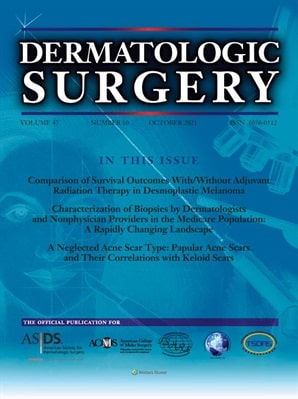
A Cadaveric Study of Dye Spreading: Determining the Ideal Injection Pattern for Masseter Hypertrophy (2021)
Title : A Cadaveric Study of Dye Spreading: Determining the Ideal Injection Pattern for Masseter Hypertrophy
Researcher : Sermswan, P., Tansatit, T., Meevassana, J., Panchaprateep, R.
Abstract : BACKGROUND: Masseter hypertrophy is the main cause of an asymmetrical and squared lower facial contour in the Asian community. Botulinum toxin injection technique is crucial to treat this condition.
OBJECTIVE: To improve injection techniques for masseter hypertrophy by elucidating the distribution of the injections within the masseter.
METHODS: Thirty masseter muscles were divided into 6 groups of 5 muscles each. Each group received one 0.2- or 0.3-mL injection at Point A, B, or C according to a three-point technique. Muscle dimensions and dye of the primary and secondary dye spreading were measured.
RESULTS: The average muscle length, width, and thickness were 69.87, 33.50, and 11.23 mm, respectively. The average primary longitudinal and horizontal spreading was 36.56 and 15.60 mm, respectively. No statistically significant difference was found between 0.2- and 0.3-mL injections at each point.
CONCLUSION: The three-point technique best fits in the safe zone and should be the standard injection technique for masseter hypertrophy. Injection at Points B and C may create secondary spreading that affect the risorius muscle and the parotid gland which are the cause of asymmetrical smiling and xerostomia, respectively. The dosage should be adjusted according to the muscle volume and not only the thickness.
Link to Academic article: DOI: 10.1097/DSS.0000000000003171
Journal : Dermatologic Surgery, 2021, 47(10).
Bibliography : Sermswan, P., Tansatit, T., Meevassana, J., & Panchaprateep, R. (2021). A Cadaveric Study of Dye Spreading: Determining the Ideal Injection Pattern for Masseter Hypertrophy. Dermatologic Surgery, 47(10), 1354–1358. DOI: 10.1097/DSS.0000000000003171
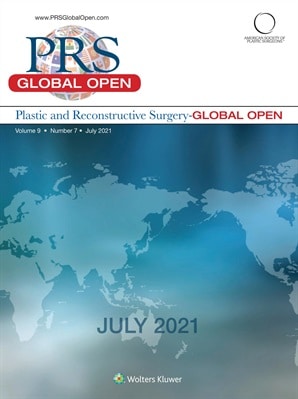
Achieving the Most Effective Hanging Points at the Lower End of the Face for Thread Lifting: Quantitative Measurement of Tissue Resistance in Different Facial Layers (2021)
Title : Achieving the Most Effective Hanging Points at the Lower End of the Face for Thread Lifting: Quantitative Measurement of Tissue Resistance in Different Facial Layers
Researcher : Rungsawang, C., Tansatit, T., Fasunloye, L.K., Uruwan, S.
Abstract : The thread lift procedure is a minimally invasive alternative to facelift surgery. The hanging point, which the terminal end of the thread is hooked into, is an important component. If it is loose and cannot stabilize the passage when the inserted thread is pulled, the lifting effect will fail. Therefore, the aim of this study was to elucidate the ability of the tissue to support the thread attachment in the different facial layers while performing this procedure. Twenty hemi-faces of 10 soft cadavers, which were divided into 45 blocks, were used to measure the tissue resistance in the midface area. The resistance of the soft tissue in the four facial layers in each block was measured while a 22G cannula connected with a force gauge was passed through it. The results showed that the tissue resistance in the sub-SMAS was higher than the SMAS and subcutaneous layers in the blocks located in the nasolabial and perioral regions. This was also significantly greater than the resistance in the subcutaneous layer in the three medial blocks below the oral commissure (P < 0.05). However, the low resistance of the sub-SMAS was found in the blocks located in the buccal and lower parotidomasseteric regions. Thus, it was preferable that the hanging point was based in the deep plane (sub-SMAS and SMAS layers) of the nasolabial, perioral, and upper parotidomasseteric regions. Moreover, the sub-SMAS layer within the buccal and lower parotidomasseteric regions should be avoided due to the loose attachment in the buccal capsule and subplatysmal fat.
Link to Academic article: DOI: 10.1097/GOX.0000000000003701
Journal : Plastic and Reconstructive Surgery – Global Open, 2021, 9(7).
Bibliography : Rungsawang, C., Tansatit, T., Fasunloye, L. K., & Uruwan, S. (2021). Achieving the Most Effective Hanging Points at the Lower End of the Face for Thread Lifting: Quantitative Measurement of Tissue Resistance in Different Facial Layers. Plastic and Reconstructive Surgery – Global Open, 9(7), e3701. DOI: 10.1097/GOX.0000000000003701

Anatomical and Ultrasonography-Based Investigation to Localize the Arteries on the Central Forehead Region During the Glabellar Augmentation Procedure (2020)
Title : Anatomical and Ultrasonography-Based Investigation to Localize the Arteries on the Central Forehead Region During the Glabellar Augmentation Procedure
Researcher : Phumyoo, T., Jiirasutat, N., Jitaree, B., Rungsawang, C., Uruwan, S., Tansatit, T.
Abstract : Glabellar augmentation is one of the most popular cosmetic procedures but can entail severe complications caused by inadvertent intravascular injection of filler. Nevertheless, few studies have investigated the arteries on the glabellar and central forehead regions. The aim of this study was to correlate the topography and location of the arteries in this area with anatomical landmarks to propose a safety guideline. Two methods were used to investigate the glabellar and central forehead areas: dissection of 19 Thai embalmed cadavers, and ultrasonographic examination of 14 healthy Thai volunteers. At the level of the glabellar point, the horizontal distances from the midline to the arteries were 4.7 mm (central artery), 7.8 mm (paracentral artery), and 14.7 and 19.2 mm (superficial and deep branches of supratrochlear artery). The depths from the skin of the arteries were 3.1 mm (central artery), 4.8 mm (paracentral artery), and 4.2 and 5.9 mm (superficial and deep branches of supratrochlear artery). The periosteal artery was detected in 71.1% as a branch of either the superior orbitoglabellar or the supratrochlear artery. It ran in the supraperiosteal layer for a short course and penetrated the periosteum above the superciliary ridge or above the medial eyebrow, adhering tightly to the bony surface. This study suggests a safe injection technique for the glabella based on a thorough knowledge of arterial distribution and topography and color Doppler ultrasonographic examination prior to the injection, which is recommended to minimize the risk of severe complications. Clin. Anat. 33:370–382, 2020. © 2019 Wiley Periodicals, Inc.
Link to Academic article: https://doi.org/10.1002/ca.23516
Journal : Clinical Anatomy, 2020, 33(3).
Bibliography : Phumyoo, T., Jiirasutat, N., Jitaree, B., Rungsawang, C., Uruwan, S., & Tansatit, T.(2020). Anatomical and Ultrasonography-Based Investigation to Localize the Arteries on the Central Forehead Region During the Glabellar Augmentation Procedure. Clinical Anatomy, 33(3), 370–382.
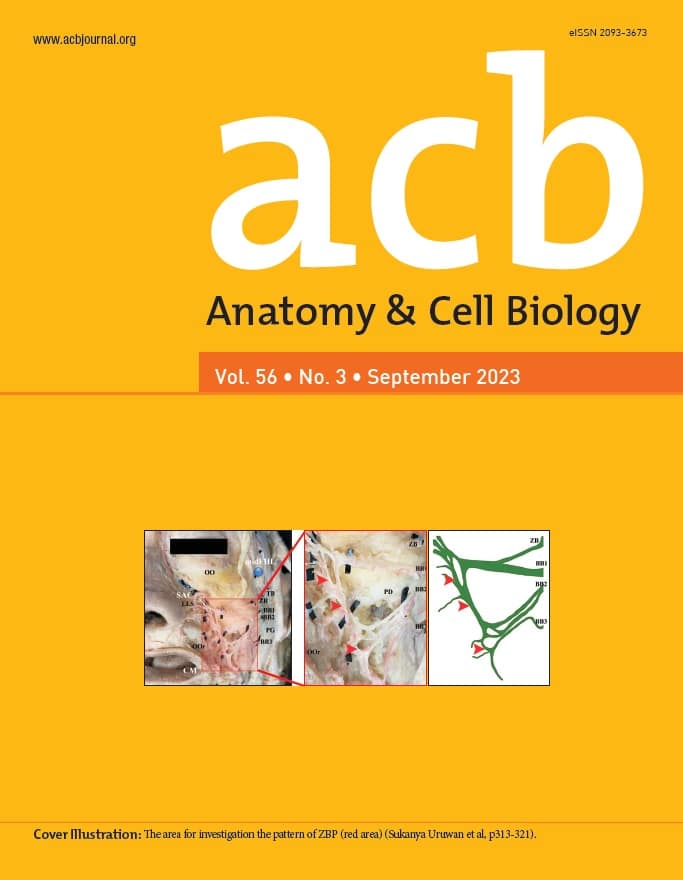
Anatomical knowledge of zygomatico-buccal plexus in a cadaveric study (2023)
Title : Anatomical knowledge of zygomatico-buccal plexus in a cadaveric study
Researcher : Uruwan, S., Rungsawang, C.Sareebot, T., Tansatit, T.
Abstract : The details of the facial nerve pattern were clearly explained in the parotid gland (PG), lateral area of the face, and periorbital areas to prevent the unexpected outcome of medical intervention. However, it remains unclear whether information about the zygomatico-buccal plexus (ZBP) in the masseteric and buccal regions. Therefore, this study aimed to help clinicians avoid this ZBP injury by predicting their common location. This study was conducted in forty-two hemifaces of twenty-nine embalmed cadavers by conventional dissection. The characteristics of the buccal branch (BB) and the ZBP were investigated in the mid-face region. The results presented that the BB gave 2-5 branches to emerge from the PG. According to the masseteric and buccal regions, the BB were arranged into ZBP in three patterns including an incomplete loop (11.9%), a single-loop (31.0%), and a multi-loop (57.1%). The mean distance and diameter of the medial line of the ZBP at the corner of the mouth level were 31.6 (6.7) and 1.5 (0.6) mm respectively, while at the alar base level were 22.5 (4.3) and 1.1 (0.6) mm respectively. Moreover, the angular nerve arose from the superior portion of the ZBP at the alar base level. The BB formed a multiloop mostly and showed a constant medial line of ZBP in an area approximately 30 mm lateral to the corner of the mouth, and 20 mm lateral to the alar base. Therefore, it is recommended that physicians should be very careful when performing facial rejuvenation in the mid-face region.
Keywords: Buccal branch; Facial rejuvenation; Zygomatico-buccal plexus.
Link to article : Anatomy and Cell Biology, 2023, 56(3), pp. 313–321. https://doi.org/10.5115/acb.23.040
Journal : Anatomy and Cell Biology / in Scopus
Citation : Uruwan, S., Rungsawang, C., Sareebot, T., & Tansatit, T. (2023). Anatomical knowledge of zygomatico-buccal plexus in a cadaveric study. Anatomy and Cell Biology, 56(3), 313–321. https://doi.org/10.5115/acb.23.040
ฐานข้อมูลงานวิจัย มหาวิทยาลัยสยาม : –

Anatomical Study of the Dorsal Nasal Artery to Prevent Visual Complications during Dorsal Nasal Augmentation (2021)
Title : Anatomical Study of the Dorsal Nasal Artery to Prevent Visual Complications during Dorsal Nasal Augmentation
Researcher : Tansatit, T., Jitaree, B.,Uruwan, S. Rungsawang, C.,
Abstract : Dorsal nasal augmentation is a common injection associated with ocular complications. Digital compressions on both sides of the nose are recommended during injection. Considering the reported incidences of visual complications, this preventive technique may need an adjustment for more effectiveness to prevent blindness. Therefore, the dorsal nasal arteries (DNAs) were studied by conventional dissections in the subcutaneous and fibromuscular tissues of the nasal dorsum in 60 embalmed cadavers. The results showed that among the 60 faces, 32 faces had bilateral DNAs (53.3%), 23 had dorsal nasal plexus with minute arteries (38.3%), and five had a single dominant DNA (8.3%). The DNA originated from one of the four arterial sources, which influenced the location and course of the artery. These sources included the ophthalmic angular arteries in 21 faces (56.8%), terminal ophthalmic arteries in two faces (5.4%), lateral nasal arteries in 11 faces (29.7%) and facial angular arteries in three faces (8.1%). Consequently, the dominant dorsal nasal artery running close to the midline found in 8% of the cases could make side compressions during nasal dorsum augmentation less effective from preventing ocular complications. However, an adjustment of digital compressions which combines pinching and side compressions is suggested to improve the safety.
Link to article: Plastic and Reconstructive Surgery – Global Open, 2021, 9(11), pp. E3924. https://doi.org/10.1097/GOX.0000000000003924
Journal : Plastic and Reconstructive Surgery – Global Open / in Scopus
Citation : Tansatit, T., Jitaree, B., Uruwan, S. & Rungsawang, C., (2021). Anatomical Study of the Dorsal Nasal Artery to Prevent Visual Complications during Dorsal Nasal Augmentation. Plastic and Reconstructive Surgery – Global Open, 9(11), e3924. https://doi.org/10.1097/GOX.0000000000003924
ฐานข้อมูลงานวิจัย มหาวิทยาลัยสยาม : –
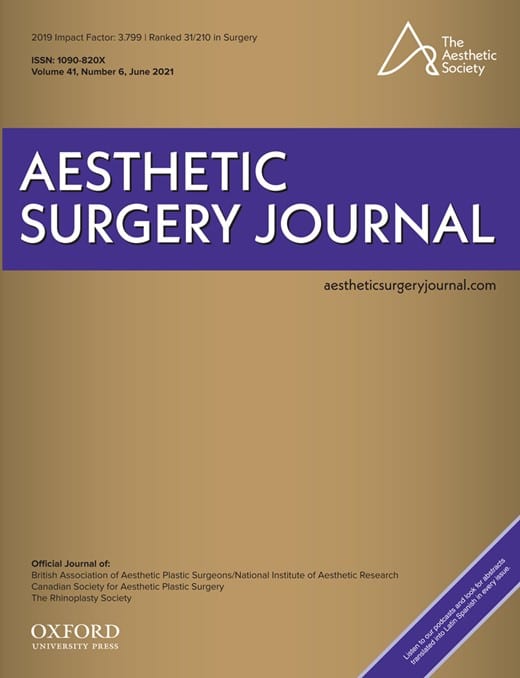
Cadaveric Dissections to Determine Surface Landmarks Locating the Facial Artery for Filler Injections (2021)
Title : Cadaveric Dissections to Determine Surface Landmarks Locating the Facial Artery for Filler Injections
Researcher : Tansatit, T., Kenny, E., Phumyoo, T., Jitaree, B.
Abstract : Background: The facial artery is a high-risk structure when performing filler injections at the nasolabial fold, buccal, and mandibular regions.
Link to Academic article: https://doi.org/10.1093/asj/sjaa235
Journal : Aesthetic Surgery Journal, 2021, 41(6).
Bibliography : Tansatit, T., Kenny, E., Phumyoo, T., & Jitaree, B. (2021). Cadaveric Dissections to Determine Surface Landmarks Locating the Facial Artery for Filler Injections. Aesthetic Surgery Journal, 41(6), NP550–NP558. https://doi.org/10.1093/asj/sjaa235
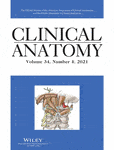
Clinical implications of the arterial supplies and their anastomotic territories in the nasolabial region for avoiding arterial complications during soft tissue filler injection (2021)
Title : Clinical implications of the arterial supplies and their anastomotic territories in the nasolabial region for avoiding arterial complications during soft tissue filler injection
Researcher : Jitaree, B., Phumyoo, T., Uruwan, S., …Pratoomthai, B., Tansatit, T.
Abstract : Introduction: The nasolabial fold (NLF) causes particular concern during aging in the middle face region. However, arterial complications of filler injections at this site have been continually reported during recent years. The aim of this study was to investigate the arterial locations and their anastomotic pathways related to filler injection sites in the NLF.
Materials and methods: Thirty hemi-faces of 15 embalmed Thai cadavers were dissected. Three anatomical landmarks of NLFs were assigned: the inferior margin level (NLF1), the mid-philtral horizontal line level (NLF2), and the inferior alar level (NLF3). Ten hemi-faces of five soft embalmed Thai cadavers underwent a modified Sihler’s staining procedure to investigate the arterial anastomoses.
Results: The artery closest to all of the landmarks was the facial artery. It was located inferomedial to NLF1 in 28%, and the mean distances along the X- and Y-axes were 3.53 ± 2.11 mm and 3.53 ± 1.75 mm, respectively. It was also located medial to NLF2 in 52.1% with an X-axis distance of 4.93 ± 1.53 mm. Several arteries were located close to NLF3, including the facial (33.3%), lateral nasal (33.3%), and infraorbital (30.0%) arteries. Anastomoses of the nasolabial arteries served to connect both the external–external and internal–external carotid systems.
Conclusions: Several arteries are located close to NLF1–NLF3. To prevent arterial injury, the locations and anastomotic pathways, as possible sources of severe complications, should be recognized prior to NLF filler injection.
Link to Academic article: https://doi.org/10.1002/ca.23617
Journal : Clinical Anatomy, 2021, 34(4).
Bibliography : Jitaree, B., Phumyoo, T., Uruwan, S., Jiirasutat, N., Pratoomthai, B., & Tansatit, T.(2021). Clinical implications of the arterial supplies and their anastomotic territories in the nasolabial region for avoiding arterial complications during soft tissue filler injection. Clinical Anatomy, 34(4), 581–589.
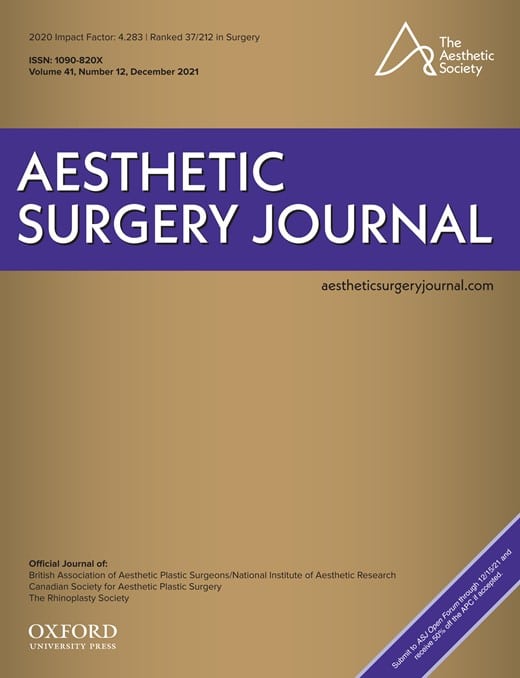
Commentary on: Deployment of the Ophthalmic and Facial Angiosomes in the Upper Nose Overlaying the Nasal Bones (2021)
Title : Commentary on: Deployment of the Ophthalmic and Facial Angiosomes in the Upper Nose Overlaying the Nasal Bones
Researcher : Tansatit, T., Phumyoo, T., Jitaree, B., Rungsawang, C., Uruwan, S.
Abstract : The authors studied patterns of nasal angiosomes focusing on the arterial sources of the upper nose and the midline anastomoses employing 3-dimensional reconstructed computed tomography imaging with radiopaque enhancement in 62 fresh cadaver heads.1 Unfortunately, the presence of subcutaneous plexuses interfered with visualization of the deep arteries. After some technical adjustment, only 26 cadaver noses were available for analysis. The authors carefully classified nasal arterial patterns into 3 types with additional 7 subtypes. Besides their fantastic work, the authors transferred their findings into clinical practice and estimated blindness risks. Some additional issues of blindness risks are further discussed in this comment for more clarification.
Link to Academic article: https://doi.org/10.1093/asj/sjaa397
Journal : Aesthetic Surgery Journal, 2021, 41(12).
Bibliography : Tansatit, T., Phumyoo, T., Jitaree, B., Rungsawang, C., & Uruwan, S. (2021). Commentary on: Deployment of the Ophthalmic and Facial Angiosomes in the Upper Nose Overlaying the Nasal Bones. Aesthetic Surgery Journal, 41(12), NP1986–NP1988. https://doi.org/10.1093/asj/sjaa397
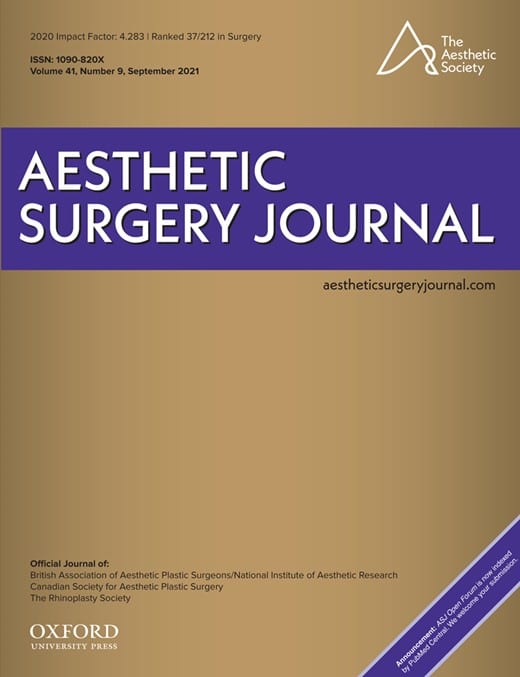
Commentary on: Safe Glabellar Wrinkle Correction with Soft Tissue Filler Using Doppler Ultrasound (2021)
Title : Commentary on: Safe Glabellar Wrinkle Correction with Soft Tissue Filler Using Doppler Ultrasound
Researcher : Phumyoo, T., Tansatit, T., Jitaree, B.
Abstract : The authors suggest that Doppler ultrasound can be used to locate the supratrochlear artery before hyaluronic acid filler injection at the glabellar wrinkles to avoid ophthalmologic complications.1 In 42 patients with 74 glabellar wrinkle lines, they reported that the supratrochlear arteries were located both at the glabellar wrinkle lines (30/74, 41%) and lateral to the glabellar wrinkle lines (44/74, 59%). They abandoned filler injection in patients whose supratrochlear artery was located at the glabellar wrinkle lines. In these 30 potentially at-risk glabellar lines, the artery was located at the deep subcutaneous layer in 24 and at the subdermal layer in 6 wrinkle lines.
Link to Academic article: https://doi.org/10.1093/asj/sjaa326
Journal : Aesthetic Surgery Journal, 2021, 41(9).
Bibliography : Phumyoo, T., Tansatit, T., & Jitaree, B. (2021). Commentary on: Safe Glabellar Wrinkle Correction with Soft Tissue Filler Using Doppler Ultrasound. Aesthetic Surgery Journal, 41(9), 1090–1093. https://doi.org/10.1093/asj/sjaa326

Comparison between Penetration Forces for a 25-Gauge Cannula to Perforate an Artery at 45-Degree and 90-Degree Angles (2022)
Title : Comparison between Penetration Forces for a 25-Gauge Cannula to Perforate an Artery at 45-Degree and 90-Degree Angles
Researcher : Tansatit, T., Uruwan, S., Rungsawang, C.
Abstract : A cannula facilitates wide injections and deviates arteries.1,2 Previous studies measured cannula penetration force regardless of angle.3,4 We measured the penetration force of a cannula at two different angles in three arterial segments.
Ten facial arteries from five soft embalmed cadavers, aged 45 to 63 years, were tested at the mandibular body, oral commissure, and lower ala. Both segmental ends were grabbed. A 25-gauge cannula attached to a force gauge pierced the arterial wall at 45 and 90 degrees. In addition, the bifurcation of the artery at the superior labial artery was tested.
Link to Academic article: DOI: 10.1097/PRS.0000000000009722
Journal :Plastic and Reconstructive Surgery, 2022, 150(6),/ in Scopus
Citation : Tansatit, T., Uruwan, S., & Rungsawang, C. (2022). Comparison between Penetration Forces for a 25-Gauge Cannula to Perforate an Artery at 45-Degree and 90-Degree Angles. Plastic and Reconstructive Surgery,150(6), 1358E–1360E. DOI: 10.1097/PRS.0000000000009722